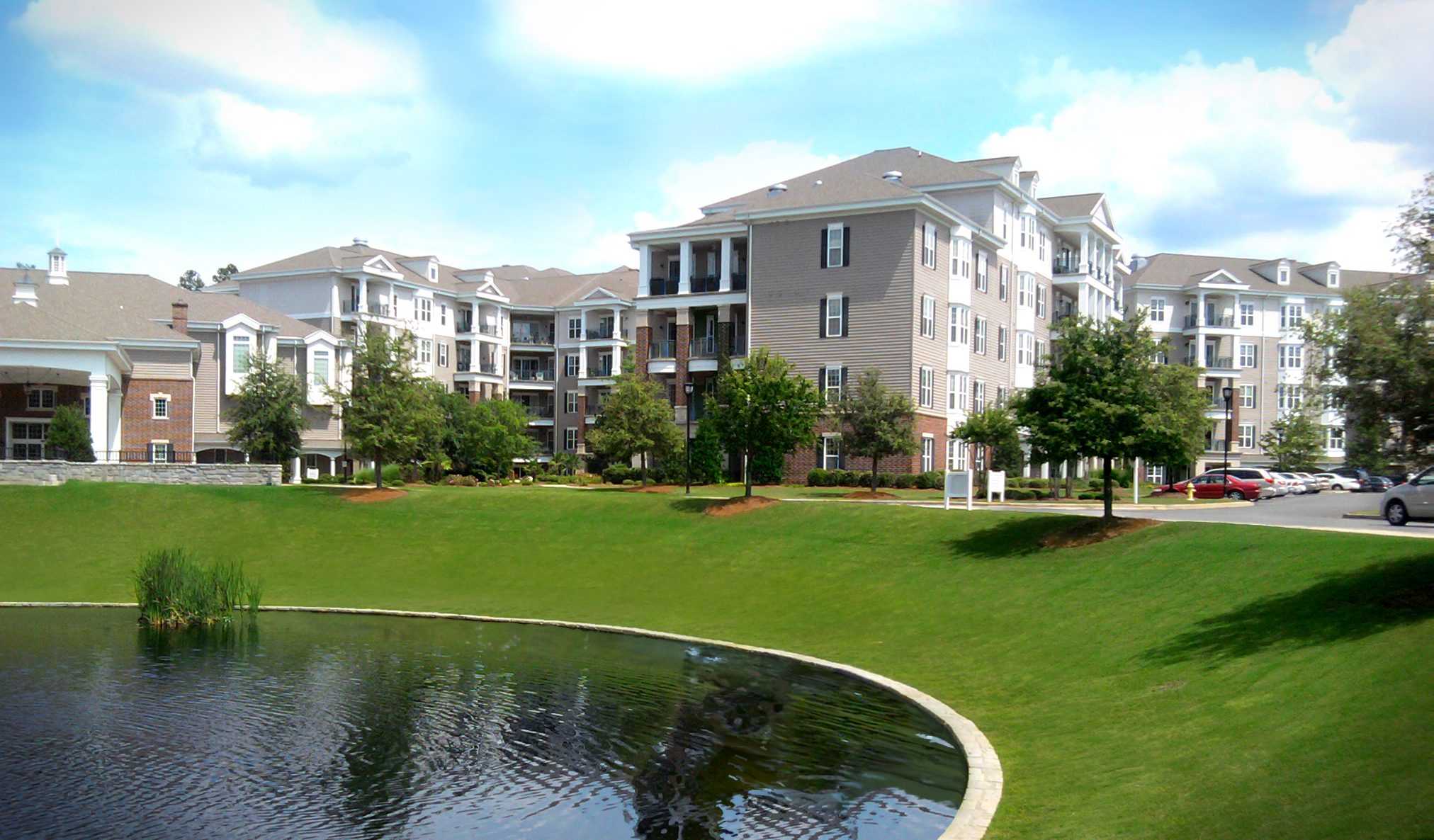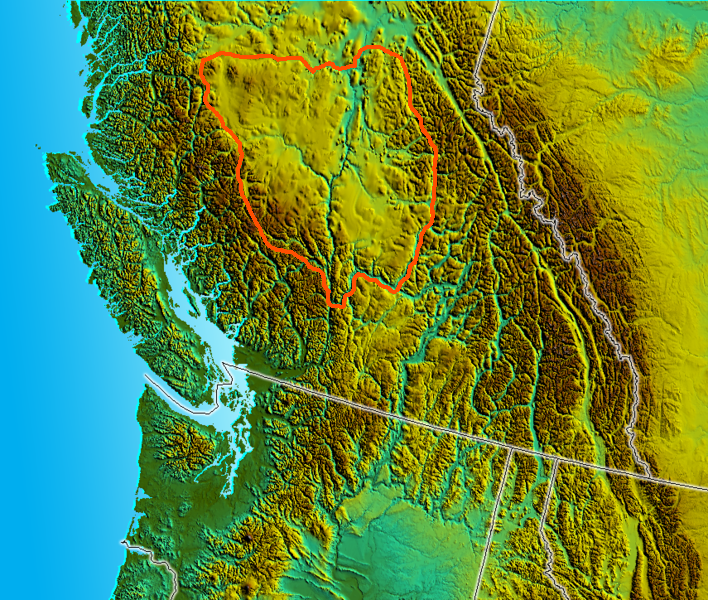|
Lac La Hache
Lac La Hache is a recreational and retirement community in the Cariboo region of British Columbia, Canada. Located on the shore of Lac La Hache alongside British Columbia Highway 97 near the regional centre of 100 Mile House, the community's origins date to the days of the Cariboo Gold Rush and the Cariboo Wagon Road, for which it provided an important roadhouse. Lac La Hache, or "The Lake of the Axe" as it translates to, was named, during the fur trade era, after the unfortunate incident of a French-Canadian voyageur who lost his axe head while chopping a hole in the ice. It is a town rich in history, as it sits along the Gold Rush Trail. Prior to colonization, both the Shuswap (Secwepemc) and Chilcotin (Tsilhqot'in) First Nations were active in the area. The Chilcotins referred to the lake as Kumatakwa, Chief or Queen of the waters. The Shuswap built pit houses near the present day municipality of Lac La Hache. See also *108 Mile Ranch 108 Mile Ranch is a residential co ... [...More Info...] [...Related Items...] OR: [Wikipedia] [Google] [Baidu] |
Retirement Community
A retirement community is a residential community or housing complex designed for older adults who are generally able to care for themselves; however, assistance from home care agencies is allowed in some communities, and activities and socialization opportunities are often provided. Some of the characteristics typically are: the community must be age-restricted or age-qualified, residents must be partially or fully retired, and the community offers shared services or amenities. There are various types of retirement communities older adults can choose from, and new types of retirement communities are being developed as the population ages. Examples of retirement community types include: * Assisted Living Communities, also known as Assisted Living and Memory Care assisted living communities, which provide all the daily services seniors need in an apartment or condominium style environment - such as activities, dining, housekeeping, nursing, and wellness - usually in a locked and ... [...More Info...] [...Related Items...] OR: [Wikipedia] [Google] [Baidu] |
Cariboo
The Cariboo is an intermontane region of British Columbia, Canada, centered on a plateau stretching from Fraser Canyon to the Cariboo Mountains. The name is a reference to the caribou that were once abundant in the region. The Cariboo was the first region of the interior north of the lower Fraser River and its canyon to be settled by non-indigenous people, and played an important part in the early history of the colony and province. The boundaries of the Cariboo proper in its historical sense are debatable, but its original meaning was the region north of the forks of the Quesnel River and the low mountainous basins between the mouth of that river on the Fraser at the city of Quesnel and the northward end of the Cariboo Mountains, an area that is mostly in the Quesnel Highland and focused on several now-famous gold-bearing creeks near the head of the Willow River. The richest of them all, Williams Creek, is the location of Barkerville, which was the capital of the Cariboo Gol ... [...More Info...] [...Related Items...] OR: [Wikipedia] [Google] [Baidu] |
British Columbia
British Columbia (commonly abbreviated as BC) is the westernmost province of Canada, situated between the Pacific Ocean and the Rocky Mountains. It has a diverse geography, with rugged landscapes that include rocky coastlines, sandy beaches, forests, lakes, mountains, inland deserts and grassy plains, and borders the province of Alberta to the east and the Yukon and Northwest Territories to the north. With an estimated population of 5.3million as of 2022, it is Canada's third-most populous province. The capital of British Columbia is Victoria and its largest city is Vancouver. Vancouver is the third-largest metropolitan area in Canada; the 2021 census recorded 2.6million people in Metro Vancouver. The first known human inhabitants of the area settled in British Columbia at least 10,000 years ago. Such groups include the Coast Salish, Tsilhqotʼin, and Haida peoples, among many others. One of the earliest British settlements in the area was Fort Victoria, established ... [...More Info...] [...Related Items...] OR: [Wikipedia] [Google] [Baidu] |
Canada
Canada is a country in North America. Its ten provinces and three territories extend from the Atlantic Ocean to the Pacific Ocean and northward into the Arctic Ocean, covering over , making it the world's second-largest country by total area. Its southern and western border with the United States, stretching , is the world's longest binational land border. Canada's capital is Ottawa, and its three largest metropolitan areas are Toronto, Montreal, and Vancouver. Indigenous peoples have continuously inhabited what is now Canada for thousands of years. Beginning in the 16th century, British and French expeditions explored and later settled along the Atlantic coast. As a consequence of various armed conflicts, France ceded nearly all of its colonies in North America in 1763. In 1867, with the union of three British North American colonies through Confederation, Canada was formed as a federal dominion of four provinces. This began an accretion of provinces an ... [...More Info...] [...Related Items...] OR: [Wikipedia] [Google] [Baidu] |
British Columbia Highway 97
Highway 97 is a major highway in the Canadian province of British Columbia. It is the longest continuously numbered route in the province, running and is the only route that runs the entire north–south length of the British Columbia, connecting the Canada–United States border near Osoyoos in the south to the British Columbia–Yukon boundary in the north at Watson Lake, Yukon. The highway connects several major cities in BC Interior, including Kelowna, Kamloops, Prince George, and Dawson Creek. Within and near these cities, Highway 97 varies from a two-lane highway to a freeway with as many as six lanes. Some remote sections also remain unpaved and gravelled. The route takes its number from U.S. Route 97, with which it connects at the international border. The highway was initially designated '97' in 1953. Route description The busiest section of Highway 97 is in West Kelowna, carrying almost 70,000 vehicles per day. Some sections in the northern regions of the provin ... [...More Info...] [...Related Items...] OR: [Wikipedia] [Google] [Baidu] |
100 Mile House
100 Mile House is a district municipality located in the South Cariboo region of central British Columbia, Canada. History 100 Mile House was originally known as Bridge Creek House, named after the creek running through the area. Its origins as a settlement go back to the time when Thomas Miller owned a collection of ramshackle buildings serving the traffic of the gold rush as a resting point for travellers moving between Kamloops and Fort Alexandria, which was north of 100 Mile House farther along the Hudson's Bay Brigade Trail. It acquired its current name during the Cariboo Gold Rush where a roadhouse was constructed in 1862 at the mark up the Old Cariboo Road from Lillooet. In 1930, Lord Martin Cecil left England to come to 100 Mile House and manage the estate owned by his father, the 5th Marquess of Exeter. The estate's train stop on the Pacific Great Eastern (now BC Rail leased and operated by Canadian National) railway is to the west of town and called Exeter. Th ... [...More Info...] [...Related Items...] OR: [Wikipedia] [Google] [Baidu] |
Cariboo Gold Rush
The Cariboo Gold Rush was a gold rush in the Colony of British Columbia, which later joined the Canadian province of British Columbia. The first gold discovery was made at Hills Bar in 1858, followed by more strikes in 1859 on the Horsefly River, and on Keithley Creek and Antler Creek in 1860. The actual rush did not begin until 1861, when these discoveries were widely publicized. By 1865, following the strikes along Williams Creek, the rush was in full swing. Towns grew up, the most famous of these being Barkerville, now preserved as a heritage site and tourist attraction. Other important towns of the Cariboo gold rush era were Keithley Creek, Quesnel Forks or simply "the Forks", Antler, Richfield, Quesnellemouthe (which would later be shortened to Quesnel), Horsefly and, around the site of the Hudson's Bay Company's fort of the same name, Alexandria. Williams Creek Richfield Richfield was the first strike on Williams Creek, and became the seat of government in the regio ... [...More Info...] [...Related Items...] OR: [Wikipedia] [Google] [Baidu] |
Cariboo Wagon Road
The Cariboo Road (also called the Cariboo Wagon Road, the Great North Road or the Queen's Highway) was a project initiated in 1860 by the Governor of the Colony of British Columbia, James Douglas. It involved a feat of engineering stretching from Fort Yale to Barkerville, B.C. through extremely hazardous canyon territory in the Interior of British Columbia. Between the 1860s and the 1880s the Cariboo Road existed in three versions as a surveyed and constructed wagon-road route. The first Cariboo Wagon Road surveyed in 1861 and built in 1862 followed the original Hudson's Bay Company's Harrison Trail (Port Douglas) route from Lillooet to Clinton, 70 Mile House, 100 Mile House, Lac La Hache, 150 Mile House to the contract end around Soda Creek and Alexandria at the doorstep of the Cariboo Gold Fields. The second Cariboo Wagon Road (or Yale Cariboo Road) operated during the period of the fast stage-coaches and freight-wagon companies headquartered in Yale: 1865 to 1885. Fro ... [...More Info...] [...Related Items...] OR: [Wikipedia] [Google] [Baidu] |
Roadhouse (facility)
A roadhouse (Australia and the United States) or stopping house (Canada) is a small mixed-use premises typically built on or near a major road in a sparsely populated area or an isolated desert region that services the passing travellers, providing food, drinks, accommodation, fuel, and parking spaces to the guests and their vehicles. The premises generally consist of just a single dwelling, permanently occupied by a nuclear family, usually between two and five family members. In Australia, a roadhouse is often considered to be the smallest type of human settlement. In Britain, the term was often a synonym for an advanced motel, but roadside pub-restaurant or hotel, depending on use, is more common today. A hotel resembling and having a public house (pub) is widely, nationally, called an inn. The word's meaning varies slightly by country. The historical equivalent was often known as a coaching inn, providing food, drinks, and rest to people and horses. North America The ... [...More Info...] [...Related Items...] OR: [Wikipedia] [Google] [Baidu] |
Voyageurs
The voyageurs (; ) were 18th and 19th century French Canadians who engaged in the transporting of furs via canoe during the peak of the North American fur trade. The emblematic meaning of the term applies to places (New France, including the ''Pays d'en Haut'' and the ''Illinois Country, Pays des Illinois'') and times where transportation of materials was mainly over long distances. The voyageurs were regarded as legendary. They were heroes celebrated in folklore and music. For reasons of promised celebrity status and wealth, this position was coveted. Despite the fame surrounding the voyageur, their life was one of toil and not nearly as glorious as folk tales make it out to be. For example, they had to be able to carry two bundles of fur over portages. Some carried up to four or five, and there is a report of a voyageur carrying seven bundles for half of a mile.Mike Hillman, "La Bonga: The Greatest Voyageur" Boundary Waters Journal Magazine, Summer 2010 Issue, pp 20–25 Her ... [...More Info...] [...Related Items...] OR: [Wikipedia] [Google] [Baidu] |






.jpg)
